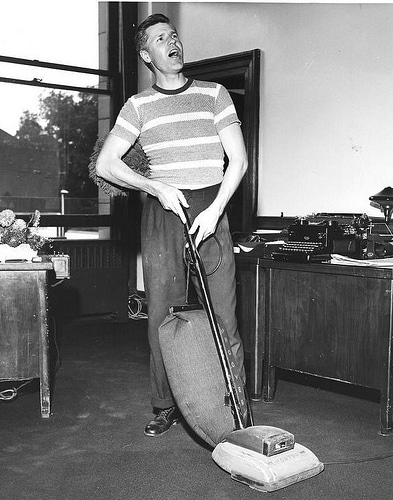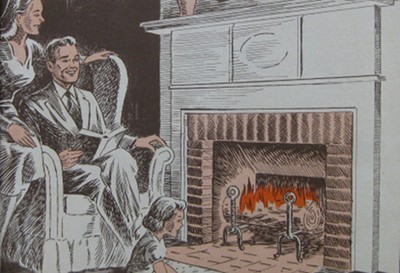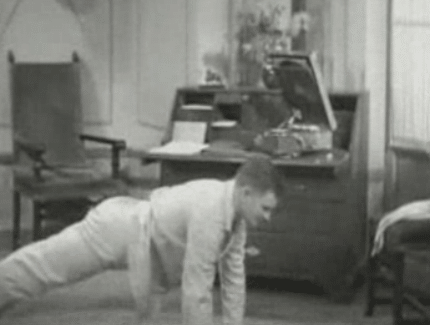
We had our first freeze here in Oklahoma last week, a sign that winter will soon be upon us. Granted, winters aren’t too bad here in Tulsa, but there are always stretches of frigid cold during the season. So before those cold winds start blowing in, I’ll be taking some steps to winterize our home. Winterizing your home makes your place more energy efficient so you can keep your family warm and toasty without breaking the bank on energy bills. In addition to making your house more energy efficient, winterizing your home also entails doing small chores that will help prevent damage to your home from snow and ice.
It doesn’t take much to get your home ready for Old Man Winter. A single weekend is all you need to properly winterize your home. Below, I’ve listed 15 things you can do to ensure you have a warm, safe house this winter and money left in your pocket for holiday shopping.
1. Call an HVAC professional to inspect your furnace. Before you turn on that furnace for the first time this winter, have an HVAC professional come check it out and give it a tune-up. They’ll make sure your furnace is running efficiently and safely. During a furnace inspection the HVAC will likely do the following:
- Do a safety check for carbon monoxide
- Clean and replace air filters
- Check blower operation
- Clean motor and fan
- Inspect gas piping to furnace
A furnace inspection will set you back $100 or more, but the energy savings and your family’s safety is well worth the investment. You might get the bad news that you need to replace the entire furnace. If that’s the case, take advantage of federal tax credits for new furnaces, which cover 30% of the cost, up to $1,500.
2. Have the HVAC guy clean and inspect heating ducts. While the HVAC man is at your house inspecting your furnace, have him do the same to your heating ducts. Studies have shown that up to 60% of heated air escapes from ducts before making it to the vents. That’s a lot of money leaking out of your pocket. The HVAC guy can check for any leaks in your air duct system and then take steps to seal them.
3. Trim any nearby trees. If you have any tree branches hanging near your roof, windows, or driveways, trim them back. Snow and ice will weigh them down and possibly cause them to break. A few years ago we had a pretty bad ice storm here in Tulsa. I remember driving by one house that had a parked car in the driveway. So much ice had accumulated on a large branch that it had snapped off and smashed the car’s roof. The owner could have easily prevented this misfortune if he had taken the time to trim his trees.
4. Reverse ceiling fans. Most people don’t know that you can use your fans during the winter to keep your house warm. On every ceiling fan there’s a switch that allows you to reverse the direction of the blades. Switch it so your ceiling fan rotates clockwise. That will push warm air down and force it to recirculate throughout the room. Don’t forget to make the switch again when it starts to warm up!
5. Block air leaks. According to the U.S. Department of Energy, drafts can waste 5% to 30% of your energy use. To find those leaks use the Black and Decker Thermal Leak Detector. You’re likely to find drafts underneath doors and near windows. If you find a leak underneath your door put a draft snake across the bottom of it. A simple rolled up bath towel will work. If you have leaks near your windows, get some weather-resistant caulk and caulk them from the outside. You can use weather stripping as well. Other places you might want to check for leaks are where pipes and wires exit your foundation.
6. Winterize the A/C. You’re probably not going to be using your air conditioner during the winter, so taking some steps to protect it during this time can extend the life of your machine. Winterizing your A/C is easy. Drain any pipes or hoses coming from your air conditioner. You don’t want them freezing during the winter months. Also make sure to vacuum out any pools of water you have in the A/C’s drain pan. Another step you can take is to cover your central air unit with a plastic air conditioner cover. The cover will keep water and snow out of the unit and prevent rusting.
7. Replace your furnace filter regularly. Regularly change your furnace’s filters throughout the winter. A dirty filter impedes air flow, reduces efficiency, and could even cause a fire in an extreme case. You might consider replacing your disposable filters with reusable electrostatic or electronic ones. You just have to give them a monthly wash, and they’re good to go another round.
8. Install storm doors and windows. Storm doors and windows can increase energy efficiency in your home by 45%. You install storm doors and windows on the outside of your regular doors and windows. Federal tax credits are available to help offset the cost of purchasing them.
9. Check your insulation. Simply adding more fiberglass insulation in your attic can boost the energy efficiency in your home. You need a minimum of 12 inches of insulation in your attic. If your insulation falls short, just add another layer of the pink or yellow itchy stuff. If you’re adding new insulation to your current insulation, make sure the new insulation doesn’t have a paper-backing. The paper acts as a vapor barrier and can cause problems for you down the road.
10. Wrap your pipes. Insulating your pipes reduces heat loss and can raise hot water temperatures delivered through your pipes, which allows you to reduce the heat on your boiler. That will save you money on your gas bill. And by making your pipes energy efficient, you also don’t have to wait as long for hot water when you turn on the shower, which helps conserve water and time. Wrapping your pipes with insulation will also help prevent your pipes from freezing during those long cold nights. You can get pre-slit pipe foam at the hardware store. Simply cut the foam to the length you need, wrap it around the pipe, and fasten it in place with duct tape.
11. Check smoke and carbon monoxide detectors. Winter sees an uptick in the number of home fires and cases of carbon monoxide poisoning because people are running their furnaces and boilers overtime in order to keep warm. To keep your family safe, check the batteries on your smoke and carbon monoxide detectors and change them if needed.
12. Prepare a 72 hour kit. During that big ice storm that hit Tulsa a few years ago, our house lost power for almost a week. And the roads, covered with a layer of ice, made it treacherous to drive. Thankfully we had a 72-hour kit stocked with food, water, and other supplies. You can buy pre-made 72-hour kits online or at most camping and outdoor stores. Better yet, save some money by making your own 72-hour kit (Hmmm… that would be a good follow-up post.)
13. Get your chimney inspected. Before you start roasting chestnuts on an open fire, have a certified chimney sweep inspect and clean your chimney. Thousands of fires each winter originate in chimneys. A chimney sweep can check the structure of your flue and remove any combustibles or obstructions in your chimney. For more information on finding a chimney sweep, visit the Chimney Safety Institute of America’s website at csia.org.
14. Wear a damn sweater. One of the easiest ways to lower your energy bill is to harness your inner Jimmy Carter by putting on a sweater while you’re in the house. A heavy sweater adds about 4 degrees of warmth to your body. If you set your thermostat to 68 degrees and wear a sweater, your abode will feel like a balmy 72. Nice!
15. Clean your gutters. Clogged gutters can lead to the formation of ice dams on your roof. Ice dams occur when water backs up and freezes near the edge of the roof. The ice continues to build up and eventually forms “dams” that block the path of melted snow from your roof. Water starts pooling in mini reservoirs and begins to seep into your house, causing water damage. To prevent ice dams, clean out the dead leaves and other gunk to have clean gutters so water can drain freely.
What other home winterization tips do you have? Share them with us in the comments!







